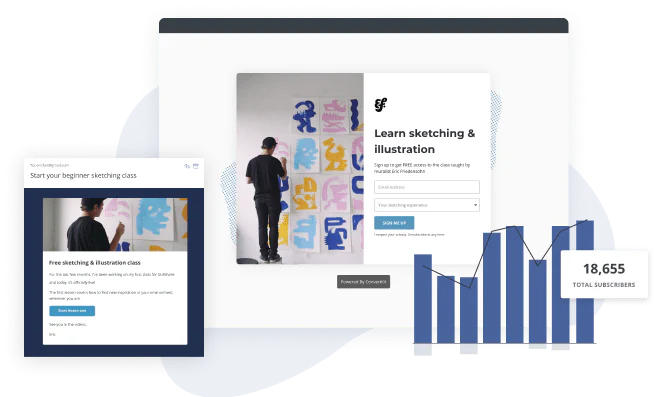In this Article
- Why creators should use social media marketing
- Why creators need email marketing
- Email marketing vs. social media
- 3 ideas to nudge email subscribers to follow you on social media
- 12 tips to turn your social media followers into email subscribers
- Examples of how creators use social media to grow their email list





